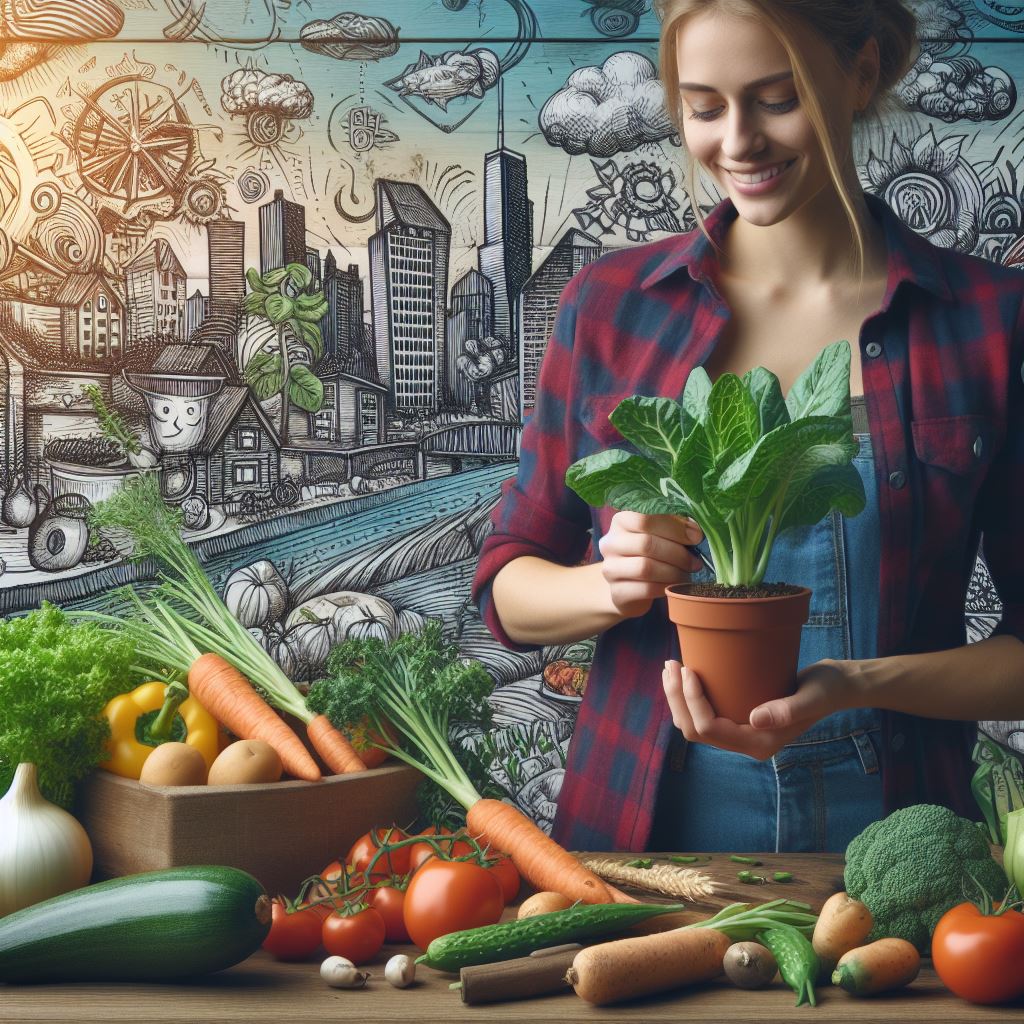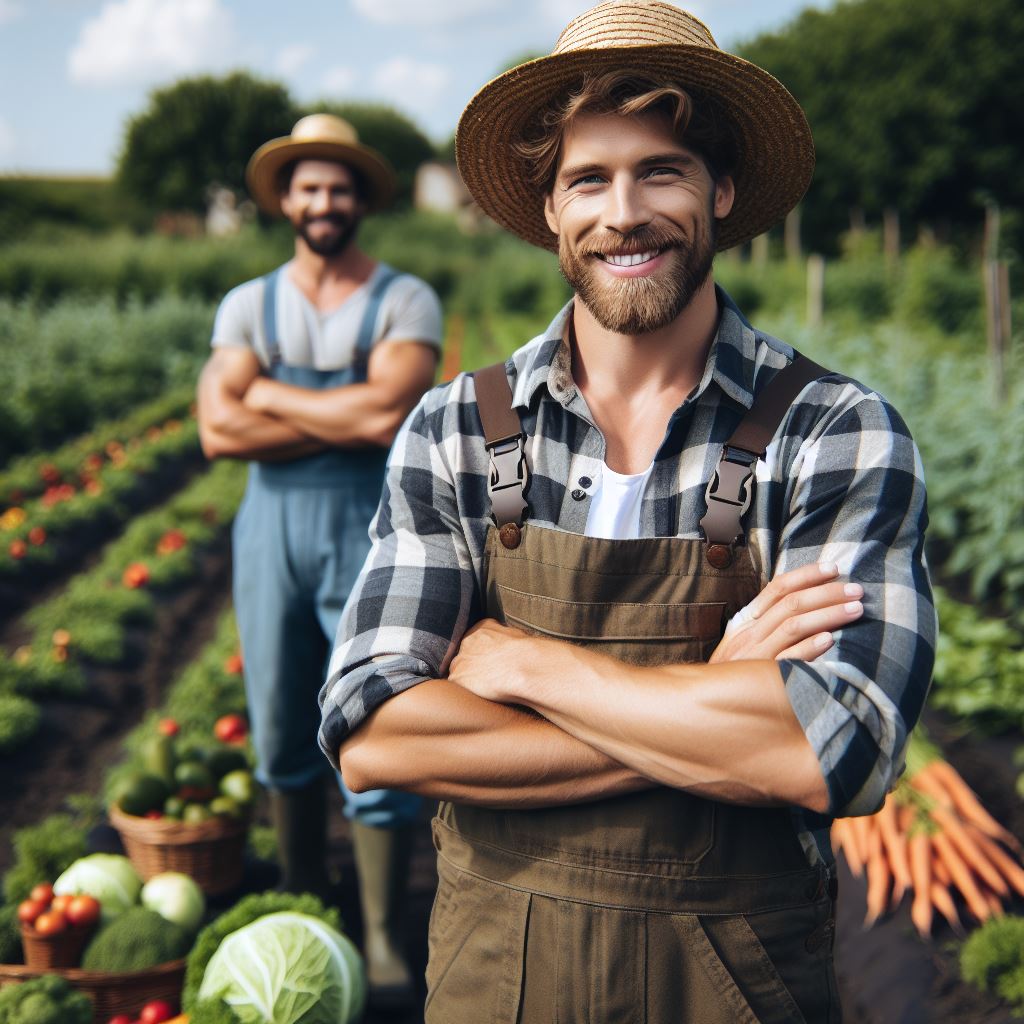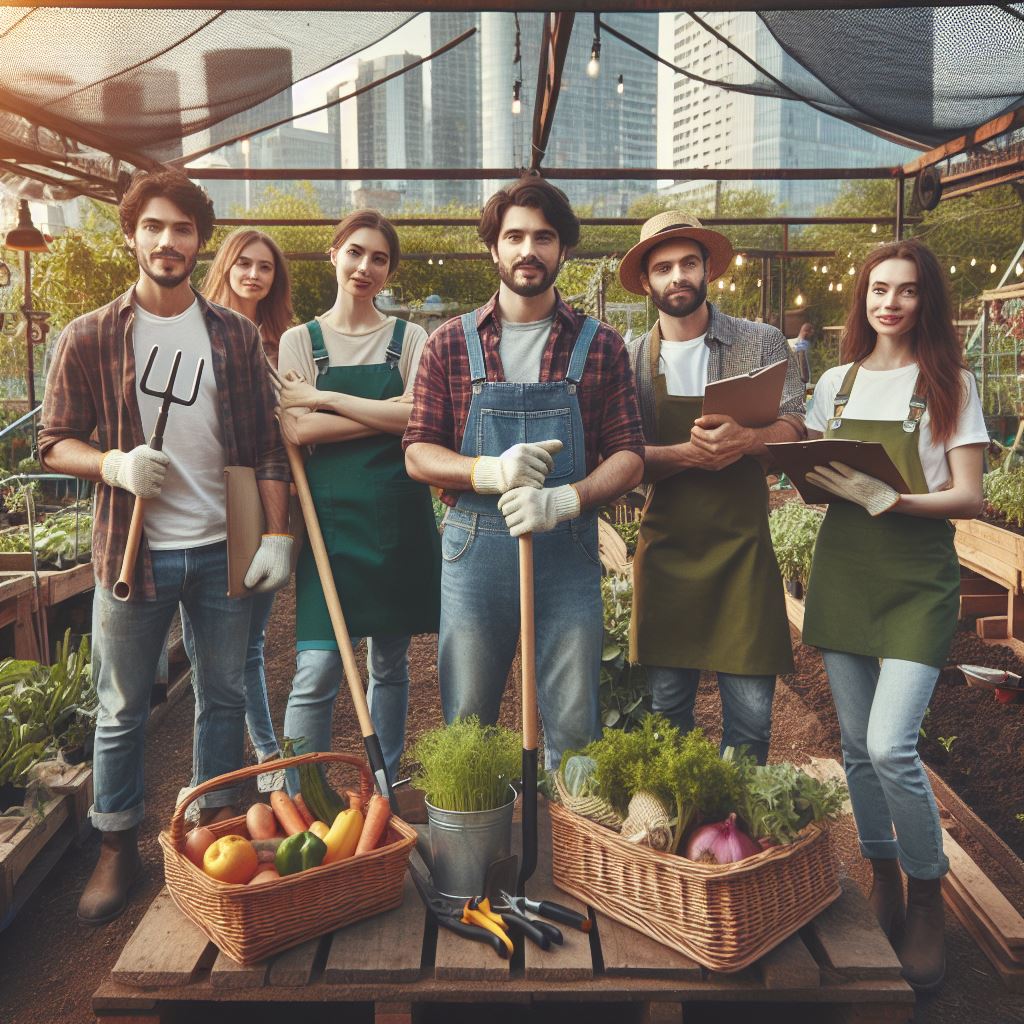Introduction
Seed saving, a time-honored practice, safeguards biodiversity and empowers farmers.
This ancient tradition involves collecting and storing seeds from plants, enabling farmers to cultivate the same crops year after year.
Nurturing Sustainability Through Seed Saving
Seed saving is pivotal for sustainable agriculture, ensuring a constant supply of diverse crops.
By preserving traditional varieties, we protect biodiversity, enhance resilience to pests and diseases, and maintain unique traits crucial for adapting to changing environmental conditions.
In a world facing climate uncertainties, seed saving becomes a beacon of agricultural stability.
Farmers who save seeds contribute to the resilience of local ecosystems, fostering a sustainable balance between agriculture and the environment.
The importance of seed saving transcends mere agricultural concerns; it becomes a custodian of cultural heritage.
Preserving heirloom seeds connects us to our ancestors and sustains traditions deeply rooted in the land.
As we delve into the intricate web of seed saving, we uncover a fundamental truth: the seeds we save today are the promise of a sustainable and vibrant tomorrow.
This section embarks on a journey through the essence of seed saving, unveiling its profound impact on the sustainability of agriculture and the rich tapestry of our natural world.
The Basics of Seed Saving
Definition of seed saving
Seed saving is a crucial practice for sustainable agriculture, providing numerous benefits for farmers and the environment.
By understanding the basics of seed saving, individuals can contribute to a resilient and sustainable food system.
Seed saving is the practice of collecting, storing, and replanting seeds.
It is an essential skill for anyone interested in sustainable agriculture and a key component in maintaining the biodiversity of our food crops.
By saving seeds, we can ensure the long-term availability of diverse plant varieties, adapt crops to local conditions, reduce reliance on external seed sources, and increase food security.
Historical context of seed saving
The historical context of seed saving dates back thousands of years when farmers relied on saving and exchanging seeds to sustain their communities.
Before the advent of commercial seed companies, farmers carefully selected and saved seeds from their best-performing plants for future use.
This process allowed them to adapt crops to their local environment and maintain a wide range of genetic diversity.
In today’s industrialized agriculture system, seed saving has become less common as farmers increasingly rely on commercial hybrid seeds.
However, there is a renewed interest in seed saving due to concerns about the loss of agricultural biodiversity and the sustainability of modern farming practices.
By saving and exchanging seeds, farmers and gardeners have the ability to preserve and propagate rare and heirloom varieties that may not be available through commercial channels.
Benefits of seed saving
The benefits of seed saving are multifaceted and far-reaching.
Firstly, seed saving preserves and promotes genetic diversity.
Commercial seed companies often focus on a limited number of high-yielding or disease-resistant varieties, leading to a loss of genetic diversity.
Saving seeds allows us to maintain a rich pool of different traits and characteristics within our crops, providing a safeguard against unforeseen challenges such as pests, diseases, or climate change.
Secondly, saved seeds are adapted to local conditions.
Over time, plants naturally adapt to their specific environment.
By saving seeds from local plants that have thrived and shown resilience, we can cultivate crops better suited to our unique climates and growing conditions.
These locally adapted varieties are more likely to be productive and require fewer external inputs like pesticides or irrigation.
Cost-effectiveness is another significant advantage of seed saving, particularly for small-scale farmers.
By saving seeds, farmers can eliminate the need to purchase seeds every year, reducing their production costs.
This economic benefit also helps maintain farmers’ independence as they are not reliant on commercial seed suppliers, which can be costly and subject to market fluctuations.
The Crucial Role of Seed Saving in Sustainable Agriculture and Community Resilience
Finally, seed saving directly contributes to increased food security.
By saving and exchanging seeds within a community, farmers ensure access to locally adapted crops.
This resilience is particularly important as climate change and other environmental pressures threaten the stability of our food systems.
Saving seeds empowers communities to have control over their food supply and reduces their vulnerability to external factors.
Basically, seed saving is a fundamental practice for sustainable agriculture.
It preserves genetic diversity, promotes adaptation to local conditions, reduces costs for farmers, and enhances food security.
Regardless of the scale or type of farming, seed saving benefits both the environment and the communities that rely on agricultural production.
By embracing this traditional practice, we can contribute to a more sustainable and resilient food future.
Read: Local Food: A Social Movement
Transform Your Agribusiness
Unlock your farm's potential with expert advice tailored to your needs. Get actionable steps that drive real results.
Get StartedThe Seed Saving Process
Selection of suitable plant varieties for seed saving
- Choose plant varieties that are open-pollinated and adapted to your local climate and conditions.
- Look for plants that demonstrate desirable traits such as disease resistance, flavor, and productivity.
- Consider the biodiversity of your area and select varieties that contribute to preserving local genetic diversity.
Harvesting seeds at the right time
- Allow the plant to fully mature and the seed to develop and dry on the plant.
- Monitor the plant closely and harvest the seeds before they disperse naturally or are eaten by pests.
- Seeds should be collected when they are fully mature and have reached their maximum size and color.
Techniques for cleaning and treating seeds
- Remove any debris, chaff, or husks from the seeds using sieves, screens, or by hand-picking.
- In some cases, seeds may need to be fermented to remove the gelatinous coating that inhibits germination.
- For certain seeds, such as legumes, scarification or stratification may be necessary to improve germination rates.
Proper storage and maintenance of seed viability
- Ensure that seeds are completely dry before storing them to prevent mold or fungal growth.
- Use airtight containers, such as glass jars or seed envelopes, to protect seeds from moisture and pests.
- Store seeds in a cool, dark, and dry place, ideally at a temperature between 32°F and 41°F.
- Regularly check stored seeds for signs of deterioration and remove any seeds that show signs of mold or rot.
Tips for exchanging and sharing saved seeds with other farmers
- Participate in seed swaps, farmer networks, or seed libraries to exchange and share saved seeds.
- Label and organize your saved seeds properly, including information on variety, date saved, and any special characteristics.
- Consider participating in community seed-saving initiatives to contribute to the preservation of agricultural diversity.
- Share knowledge and experiences with other farmers to promote the importance of seed saving and sustainability.
By following these steps, farmers can actively participate in seed saving, contributing to sustainability and the preservation of agricultural biodiversity.
Saving and sharing seeds not only ensures the availability of quality seeds but also empowers farmers to adapt to changing environmental conditions and challenges.
Seed saving is a key practice for a sustainable future in agriculture.
So, let’s start saving seeds and sow the seeds of sustainability!
Read: Pesticide-Free Farming Pros

Challenges and Solutions in Seed Saving
Cross-pollination and the risk of unwanted hybridization
Cross-pollination poses a significant challenge in seed saving as it can lead to unwanted hybridization between different plant varieties.
This can result in the loss of genetic purity and the inability to maintain the desired traits in future generations.
However, there are several solutions to overcome this challenge.
One effective solution is the isolation of plant varieties to prevent cross-pollination.
This can be achieved by creating physical barriers such as fences, nets, or distance between different plant varieties to ensure pollinators do not transfer pollen between them.
Additionally, timing the flowering periods of different varieties can help reduce the risk of cross-pollination.
Another solution is utilizing manual pollination techniques.
By hand-pollinating plants, it is possible to control which plants are cross-pollinated and ensure the desired traits are maintained.
This method is particularly useful for plants with specific traits that are valuable and need to be preserved.
Contamination from genetically modified organisms (GMOs)
Contamination from genetically modified organisms is a major concern in seed saving.
GMOs can unintentionally cross-pollinate with non-GMO plants, leading to genetic contamination and compromising the purity of saved seeds.
This poses a significant threat to seed diversity and sustainability.
However, there are strategies to mitigate this risk.
One solution is to create buffer zones around fields where genetically modified crops are grown.
These buffer zones help prevent cross-pollination between GMOs and non-GMO plants by providing a physical distance that reduces the chance of gene flow.
Another solution is to engage in rigorous testing and verification processes.
Farmers and seed savers can utilize genetic testing techniques to detect any contamination in their saved seeds.
This allows them to discard contaminated seeds and maintain the genetic purity of their seed stock.
Strategies for preventing cross-pollination and maintaining seed purity
Several strategies can be employed to prevent cross-pollination and maintain seed purity.
Firstly, selecting varieties that are naturally self-pollinating can significantly reduce the risk of cross-pollination.
Self-pollinating plants have flowers that typically fertilize themselves, making them less susceptible to unwanted hybridization.
Another strategy is maintaining adequate spacing between different plant varieties.
By providing sufficient distance, the risk of pollen transfer by wind or insects is reduced, minimizing the chances of cross-pollination.
Additionally, practicing careful crop rotation can help prevent cross-pollination.
By rotating crops and avoiding planting the same species or related species in close proximity in consecutive years, the likelihood of cross-pollination is minimized.
Building seed networks and collaborations
Building seed networks and collaborations is crucial for the success of seed saving efforts.
By establishing partnerships with other seed savers, farmers, and organizations, it is possible to exchange seeds, knowledge, and resources, ensuring a diverse and resilient seed supply.
Seed libraries or seed banks can play a vital role in building seed networks.
These institutions provide a central location for storing and sharing seeds, creating a collaborative environment where seed savers can come together to contribute and access a wide variety of seeds.
Additionally, education and awareness programs can help foster a culture of seed saving and encourage more individuals to participate in seed networks.
Workshops, training sessions, and community events can provide valuable information and skills needed for successful seed saving practices.
In fact, while there are challenges associated with seed saving, solutions exist to overcome them.
By addressing cross-pollination risks, GMO contamination, and implementing strategies to maintain seed purity, we can ensure the sustainability of our seed supply.
Furthermore, building seed networks and collaborations empowers individuals and communities to actively contribute to seed saving efforts, fostering a resilient and diverse agricultural system.
Read: Agroforestry: Farms and Forests
Gain More Insights: Fresh & Local: Amy’s Farming Journey
Seed Saving and Environmental Sustainability
Impact of industrial agriculture on seed diversity
- Industrial agriculture has led to the decline of seed diversity.
- Large-scale monoculture crops rely on a limited number of commercial seeds.
- This reduced genetic diversity makes crops more vulnerable to diseases and pests.
- Loss of traditional and local seed varieties also weakens food security.
- Seed saving helps preserve traditional varieties and enhances resilience in the face of challenges.
Role of seed saving in promoting regenerative farming practices
- Regenerative farming practices prioritize soil health and biodiversity.
- Seed saving enables farmers to adapt and select seeds suitable for their specific ecosystems.
- This leads to healthier crops and reduces the need for synthetic fertilizers and pesticides.
- Seed saving also supports crop rotation and intercropping, enhancing the overall sustainability of farming.
Mitigating the effects of climate change through seed saving
- Climate change poses significant challenges for agriculture.
- Seed saving helps develop plant varieties that are resilient to extreme weather conditions.
- Farmers can identify and multiply seeds that withstand drought, heat, or flooding.
- Adapting to changing climatic conditions becomes easier with a diverse range of saved seeds.
Cultivating local resilience and food sovereignty through seed saving
- Seed saving empowers local communities to become self-sufficient in their food production.
- By preserving and exchanging seeds, communities maintain control over their food supply.
- Relying less on external seed sources promotes food sovereignty and reduces dependency.
- Local resilience is strengthened as diverse seed varieties adapt to unique ecological conditions.
Overall, seed saving plays a vital role in enhancing environmental sustainability in several ways.
It helps combat the negative impact of industrial agriculture on seed diversity, promotes regenerative farming practices, and mitigates the effects of climate change.
Additionally, seed saving fosters local resilience and food sovereignty, empowering communities to be self-reliant.
Embracing seed saving practices is essential for creating a sustainable and resilient agricultural system for future generations.
Read: Composting for Healthier Soil
The Role of Seed Saving in Preserving Cultural Heritage
Connection between seeds and cultural identity
Seeds play a fundamental role in shaping cultural identity and heritage.
Indigenous communities have a deep connection with their traditional seeds, which are intertwined with their cultural practices.
The diversity of seeds cultivated by a community reflects their culinary traditions, rituals, and spiritual beliefs.
By saving and preserving these seeds, communities can ensure the continuity of their cultural heritage for future generations.
Examples of indigenous seed saving traditions
Many indigenous communities around the world have long-standing seed saving traditions.
Showcase Your Farming Business
Publish your professional farming services profile on our blog for a one-time fee of $200 and reach a dedicated audience of farmers and agribusiness owners.
Publish Your ProfileIn North America, the Native American tribes have been practicing seed saving for thousands of years.
They carefully select, save, and share seeds that are adapted to their local ecosystems and specific growing conditions.
Similarly, in Africa, indigenous communities have preserved valuable crop varieties through their seed saving methods.
These traditions have been passed down through generations, contributing to cultural resilience and food security.
Importance of safeguarding traditional knowledge associated with seed saving
Traditional knowledge related to seed saving is crucial for maintaining biodiversity and sustainable agricultural practices.
Indigenous farmers possess valuable information about seed selection, storage, and cultivation techniques.
This traditional knowledge is based on centuries of trial and error, adapted to different environments and climate conditions.
Preserving and respecting this knowledge is essential in the face of changing climatic conditions and industrial agriculture.
It also empowers indigenous communities and provides them with a sense of autonomy and cultural pride.
In essence, seed saving plays a vital role in preserving cultural heritage.
Seeds are not just agricultural resources; they are cultural artifacts that hold significant value.
Through seed saving, indigenous communities can maintain their cultural identity, traditions, and traditional knowledge.
Preserving seed diversity and safeguarding traditional practices are essential for a sustainable and resilient future.
By recognizing the importance of seed saving, we can contribute to the preservation of cultural heritage and promote sustainability.
Conclusion
Recap of the significance of seed saving for sustainability
Seed saving is crucial for sustainability as it preserves genetic diversity and empowers farmers and gardeners to be self-sufficient.
Encouragement for farmers and gardeners to embrace seed saving practices
By saving seeds, farmers and gardeners can adapt crops to local conditions, reduce costs, and create resilient food systems.
Importance of supporting local seed-saving initiatives and seed banks
Supporting local seed-saving initiatives and seed banks ensures that valuable plant varieties are conserved and accessible to future generations.
It also fosters collaboration and knowledge sharing among growers.
Overall, seed saving is not only a practical approach to sustain agriculture, but it also fosters resilience, biodiversity, and community cooperation.
By embracing this practice, farmers and gardeners contribute to a more sustainable and self-reliant future.
Let us all support and engage in seed-saving initiatives to secure our food systems and preserve our agricultural heritage.




